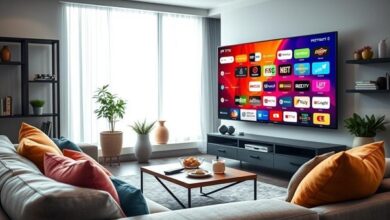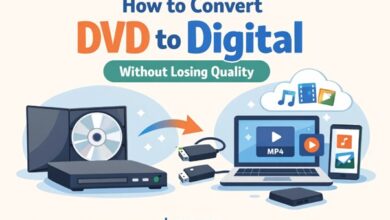From Burnout to Balance: Managing Digital Noise in 2025

It’s no surprise that in 2025, many of us are overwhelmed, not just by visual stimuli, but by a constant stream of sound. Notifications ping, voice chats hum, ambient music plays, and multi-tasking creates a continuous audio buzz. This digital noise is contributing to a new kind of fatigue.
Today’s wellness-aware consumers are treating sound sensitivity just as seriously as they treat screen time. Notably, tools like Audien Hearing are being discovered by younger audiences, not necessarily for hearing loss, but as part of a broader shift in audio awareness and self-care. In a world where every ping demands attention, managing digital noise is now essential to finding daily balance.
In this guide, we’ll explore how sound overload contributes to burnout and offer practical solutions to form a healthier relationship with auditory stimulation.
1. What Is Digital Noise, and Why It Drains You
Digital noise includes any sound your brain needs to process constantly: group chats, app alerts, background music, and notifications. Unlike sudden loud sounds, this constant low-level hum can be more subconsciously taxing.
Research shows that noise, even perceived silence broken by occasional pings, stimulates cortisol release and disrupts focus. Over time, this sensory overstimulation can contribute to fatigue, irritability, and difficulty sleeping.
2. Sound Sensitivity: A Growing Wellness Concern
Dismissed for years as a minor inconvenience, sound sensitivity, or “ear fatigue”, is gaining recognition. It’s characterized by difficulty concentrating, a sense of overwhelmed hearing, or a constant need to turn audio down.
Recent data from the National Institute for Occupational Safety and Health (NIOSH) confirms that even moderate levels of ambient noise, when persistent, can raise stress and reduce performance, especially during long working hours or remote scheduling.
For many, this has meant reevaluating headphone use, ambient sound, and daily exposure to audio stimuli.
3. How Digital Work Culture Fuels Noise Burnout
Remote meetings with poor audio, group chats that never pause, media auto-playing, these are all part of a digital work environment where sound is constant and unavoidable. Notifications no longer signal importance; they signal urgency, and can trigger stress responses with every ping.
Many professionals report feeling exhausted after back-to-back Zoom sessions, not from visuals, but from auditory overload. Managing voice projection, echo, and alert frequencies becomes just as critical as managing content or time blocks.
4. Smart Tools to Reduce Digital Noise and Reclaim Focus
Here are some effective tech interventions making a real difference in daily sound management:
-
Use Headphones with Active Noise Cancellation (ANC)
These block ambient noise and allow you to lower volume. ANC headphones like those from Sony or Bose also reduce high-frequency alerts and help prevent volume escalation to overpower background noise.
-
Configure Device & App Settings
Mute group chat channels during deep focus time. Disable notification sounds for low-priority apps. Use message previews instead of full alert sounds. Subtle configuration helps reduce auditory interruptions.
-
Schedule “Silent” Work Blocks
Dedicate blocks of your workday to silent focus, no video, no music, no notifications. Use phone “Do Not Disturb” mode and close messaging tabs. This helps reset your audio baseline and restore mental clarity.
-
Use Ambient Sound Apps Mindfully
Ambient generators like Noisli or Brain.fm can mask sudden noises without overstimulation, but use them sparingly. Opt for neutral tones instead of energetic beats or binaural pulses during work.
5. Environment Tweaks That Help Reduce Echo & Noise
Sound overload isn’t only digital, it’s also physical. Consider these changes for your workspace:
- Soft surfaces: Rugs, curtains, and wall hangings reduce echo and lower reverb.
- Bookshelves or acoustic panels: Placed behind your workspace to absorb sounds.
- White noise machines: Create a consistent baseline that smoothes out sudden spikes.
These adjustments reduce the need to flee your home office for a quieter café, and make your space inherently calmer.
6. Reframing Sound Through Wellness Tools
It may seem odd to include hearing devices in a burnout guide, but tools like Audien Hearing reflect how sound health is evolving into mainstream wellness. Consumers increasingly view audio balance not as a medical necessity, but as part of everyday self-care, akin to ergonomic desks or smart lighting.
While users searching for hearing solutions such as portable amplifiers or budget devices may not need medical intervention, the decision to opt for clarity, reduced stress, or reduced listening fatigue is becoming more intentional.
7. Daily Practices to Train Your Ear for Balance

Alongside tech, some simple behavioral tweaks help recalibrate your sound sensitivity:
- Silent breaks: Spend 5-10 minutes per hour in quiet, no music, no chatter.
- Ear-friendly routines: Use reminders to lower headphone volume and stretch.
- Digital declutter: Remove non-essential sounds from apps, or schedule quiet hours.
These habits help reset overstimulated auditory systems, making your environment more balanced overall.
Burnout in 2025 isn’t just visual, it’s acoustic. As digital noise becomes part of everyday life, wellness requires more than ergonomic desks or blue-light filters. It requires intentional sound design.
From configuring app sounds to using ANC headphones or exploring hearing-friendly tools like Audien Hearing, individuals are reclaiming auditory calm. Managing digital noise isn’t just a productivity tactic, it’s a lifestyle upgrade.
In a world that never stops talking, sometimes the best step toward balance is simply to listen less, to the noise, and more to what matters.



